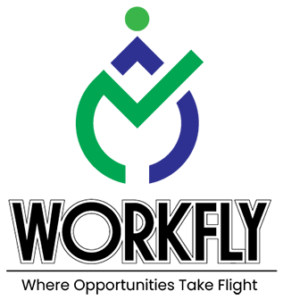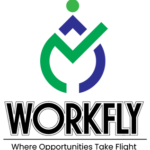Human Resources (HR) is no longer just about hiring and administrative tasks. Modern HR departments are strategic partners who use key performance indicators (KPIs) to guide decision-making, streamline processes, and foster a positive organizational culture.
You might ask, what are kpis? Simply put, KPIs are quantifiable measures used to evaluate the success of an organization or a specific activity. In HR, these metrics enable leaders to make informed decisions on talent management, employee engagement, and operational efficiency.
By tracking the right HR KPIs, companies can transform raw data into a roadmap for success, reducing costs, enhancing productivity, and ultimately achieving a competitive edge.
As we dive into 2025, here are 12 essential HR KPIs every organization should track.
1. Employee Turnover Rate
Why It Matters
Employee turnover rate is a critical indicator of organizational health. A high turnover rate can signal issues with employee satisfaction, leadership effectiveness, or workplace culture. By monitoring this KPI, HR professionals can detect trends and implement retention strategies that reduce recruitment costs and maintain a stable, experienced workforce.
How to Measure?
Calculate turnover by dividing the number of employees who leave within a given period by the average number of employees during that same period, then multiply by 100 to express it as a percentage.
Formula: (Number of Employees Who Left ÷ Average Total Employees) × 100
Frequency: Quarterly or annually
Real-World Application
For example, a company with a 15% turnover rate may invest in exit interviews and enhanced onboarding processes to identify and address root causes. As per industry insights from Shiftbase, understanding employee turnover is crucial for developing proactive HR strategies that keep talent on board.
- Google: Known for its comprehensive exit interviews and robust data analysis, Google leverages turnover data to refine its employee engagement initiatives.
- IBM: Implements predictive analytics to identify early signs of potential turnover and proactively addresses issues.
- Shiftbase: As featured in their 2025 HR KPI blog, Shiftbase helps mid-sized companies monitor turnover and promptly adjust retention strategies to reduce costs.
2. Time to Hire
Why It Matters
Time to hire measures the efficiency of your recruitment process by tracking the duration from when a job vacancy is posted to when an offer is accepted. A shorter time to hire not only helps secure top talent but also reduces the opportunity cost associated with vacant roles.
How to Measure?
Subtract the job posting date from the hire date for each new recruit, then calculate the average time across all hires.
- Formula: Sum of (Hire Date – Job Posting Date) for all hires ÷ Total Number of Hires
- Best Practice: Use recruitment automation tools to streamline scheduling and candidate screening.

Real-World Application
Organizations using streamlined processes and AI-driven recruitment tools, as discussed by NLB Services, can significantly reduce time to hire, ensuring a rapid response to talent needs.
- Amazon: Uses sophisticated Applicant Tracking Systems (ATS) to reduce hiring time, ensuring they secure talent in a highly competitive sector.
- LinkedIn: Their in-house recruiting team continuously optimizes the process by benchmarking time-to-hire across different roles.
- NLB Services: Their HR KPI framework emphasizes reducing time to hire to around 42 days, as shared in their recent report.
3. Cost per Hire
Why It Matters
Cost per hire is an essential metric that tracks the financial efficiency of recruitment efforts. This KPI encompasses expenses related to advertising, recruitment agencies, interviewing, and onboarding. Controlling these costs is critical for maintaining a balanced HR budget.
How to Measure?
Divide total recruitment costs by the number of hires within a given period.
- Formula: Total Recruitment Costs ÷ Total Number of Hires
- Considerations: Include both direct and indirect costs for a comprehensive view.
Real-World Application
A reduction in cost per hire, achieved through improved sourcing strategies and the use of digital platforms, can free up resources for strategic initiatives. Testlify highlights how data-driven assessments can streamline hiring processes and reduce these costs.
- Microsoft: Invests in automated screening and recruitment marketing platforms to minimize costs while maintaining a high quality of hire.
- Testlify: As demonstrated in their HR KPIs overview, using pre-employment assessments can reduce the average cost per hire by streamlining candidate selection.
- Salesforce: Continuously benchmarks their recruitment expenses to ensure their hiring process remains cost-effective.
4. Employee Productivity
Why It Matters
Employee productivity gauges the output and efficiency of your workforce. When measured correctly, this KPI can help identify whether employees have the necessary support, training, and tools to perform optimally.
How to Measure?
Productivity may be quantified by comparing output to work hours or setting benchmarks relative to historical data.
- Common Methods: Output per hour, project completion rates, or revenue per employee.
- Benchmarking: Compare against historical data or industry standards.
Real-World Application
For instance, if a customer service team consistently exceeds resolution targets, it may indicate that their processes are well optimized. Insights from ThoughtSpot’s analytics illustrate how organizations can harness productivity data to drive continuous improvement .
- Adobe: Uses advanced analytics to monitor productivity trends and identify areas where workflow improvements can be made.
- ThoughtSpot: Their dashboards enable companies to analyze productivity data in real time, offering actionable insights to boost efficiency.
- Amazon: Regularly reviews team productivity to optimize workloads and adjust resource allocation, ensuring peak performance across operations.
5. Employee Engagement (eNPS)
Why It Matters
Employee engagement is a measure of how emotionally invested employees are in their work. High engagement is directly linked to better performance, lower turnover, and improved overall morale. The Employee Net Promoter Score (eNPS) is a popular metric used to gauge this engagement.
How to Measure?
eNPS is determined by asking employees how likely they are to recommend the company as a place to work and categorizing responses into promoters, passives, and detractors.
- eNPS Calculation: % of Promoters minus % of Detractors, based on survey responses.
- Survey Frequency: At least annually, with pulse surveys conducted quarterly for ongoing monitoring.
Real-World Application
An organization with an eNPS of 75%, for example, can use this positive feedback to reinforce best practices and address any emerging issues.
- Google: Routinely conducts comprehensive engagement surveys to drive initiatives that maintain high eNPS scores.
- LinkedIn: Their robust employee feedback mechanisms help them continuously refine engagement strategies.
6. Absenteeism Rate
Why It Matters
The absenteeism rate reflects the percentage of scheduled workdays that employees miss. Persistent high absenteeism can be symptomatic of burnout, low morale, or health issues, all of which negatively impact productivity and team dynamics.
How to Measure?
Divide the total number of unscheduled absence days by the total number of scheduled workdays, then multiply by 100.
- Formula: (Total Unscheduled Absence Days ÷ Total Scheduled Workdays) × 100
- Actionable Step: Compare across departments to pinpoint problem areas.
Real-World Application
If the absenteeism rate in a particular department spikes, HR can intervene with wellness programs or workload adjustments. Research by ThoughtSpot and LinkedIn note the importance of monitoring absenteeism as a key driver of operational efficiency.
- Apple: Uses data analytics to monitor absentee trends and implement wellness programs aimed at reducing unscheduled absences.
- LinkedIn: As reported by HR consultants on their platform, tracking absenteeism per manager can reveal leadership challenges that need addressing.
7. Employee Retention Rate
Why It Matters
Closely linked to turnover, the employee retention rate measures how successfully an organization can keep its talent over time. High retention rates typically indicate a positive work environment and effective HR practices.
How to Measure?
Divide the number of employees retained during a period by the number of employees at the start of the period, then multiply by 100.
- Formula: (Number of Employees Retained ÷ Number of Employees at Start of Period) × 100
- Usage: Compare retention rates over time to evaluate the impact of HR initiatives.
Real-World Application
Companies with retention rates above 90% often have strong cultures and career development programs.
- Google and Salesforce: Both companies have implemented extensive retention programs, such as continuous career development and employee recognition systems, contributing to their industry-leading retention rates.
- CompanySights: Their benchmarking data shows that organizations with retention rates above 90% often invest in comprehensive employee engagement strategies.
- IBM: Uses detailed retention analytics to monitor the effectiveness of its internal mobility and career growth programs.
8. Training and Development ROI
Why It Matters
Investing in employee training is vital for ongoing development and long-term success. Measuring the return on investment (ROI) of training initiatives helps organizations assess the effectiveness of these programs and justify expenditures.
How to Measure?
Calculate ROI by comparing the cost of training programs to the performance improvements and productivity gains resulting from those programs.
- Formula: (Performance Improvement or Revenue Increase Attributable to Training – Cost of Training) ÷ Cost of Training × 100
- Additional Methods: Employee surveys and post-training performance evaluations.
Real-World Application
If a training program improves productivity by 20% and reduces error rates, its ROI can validate further investment in employee development.
- Microsoft: Invests heavily in continuous learning platforms and tracks training ROI through improvements in employee performance metrics.
- Adobe: Uses detailed data analytics to assess the impact of its leadership and technical training programs on overall productivity.
9. Diversity and Inclusion Metrics
Why It Matters
A diverse and inclusive workforce drives innovation and reflects the values of modern business. Tracking diversity and inclusion metrics enables HR to measure representation, equity, and the overall inclusivity of the workplace.
How to Measure?
Metrics can include the percentage of employees from underrepresented groups, diversity in leadership roles, and results from inclusion surveys.
- Common Metrics: Percentage of employees from underrepresented groups, diversity in leadership, inclusion survey scores.
- Benchmarking: Compare against industry standards and internal goals.
Real-World Application
Organizations that actively track and improve these metrics often report higher employee engagement and better overall performance. Insights from ThoughtSpot and CompanySights underscore the strategic advantage of prioritizing diversity and inclusion in HR.
- Microsoft: Publicly shares its diversity reports and uses these metrics to set and achieve ambitious inclusion goals.
- Salesforce: Uses D&I metrics to drive initiatives that ensure balanced representation across all levels of the organization.
10. HR-to-Employee Ratio
Why It Matters
The HR-to-employee ratio provides insight into whether the HR department is adequately staffed to support the organization’s workforce. A balanced ratio ensures that HR functions such as recruitment, training, and employee support are effectively managed.
How to Measure?
Divide the total number of employees by the number of HR professionals.
- Formula: Total Number of Employees ÷ Number of HR Professionals
- Context: Varies by industry and company size.
Real-World Application
An optimal HR-to-employee ratio can lead to faster response times and more personalized support. Research Data from ThoughtSpot and CompanySights indicate that maintaining an efficient ratio is critical for scalability and operational efficiency.
- Workday: Often cited as a leader in HR technology, Workday uses an optimal HR-to-employee ratio to maintain efficient operations in large enterprises.
- Adobe: Maintains a balanced ratio that enables its HR team to offer personalized support while effectively managing organizational needs.
- CompanySights: Provides benchmarking tools that help companies ensure their HR staffing levels are aligned with operational demands.
11. Revenue per Employee
Why It Matters
Revenue per employee is a high-level metric that indicates the financial contribution of each employee to the organization’s success. It helps HR and business leaders understand the efficiency of their human capital investment.
How to Measure?
Divide total revenue by the number of employees.
- Formula: Total Revenue ÷ Total Number of Employees
- Application: Track trends over time to gauge the impact of HR initiatives on financial performance.
Real-World Application
Organizations that consistently monitor this KPI can identify areas for process improvement and workforce optimization. When aligned with other performance metrics, revenue per employee becomes a powerful indicator of business health, a metric extensively discussed by ThoughtSpot.
- Amazon: Uses revenue per employee metrics to fine-tune operations and optimize its vast workforce for maximum efficiency.
- Apple: Regularly benchmarks its revenue per employee to ensure that investments in talent and technology drive sustainable growth.
- ThoughtSpot: Their analytics tools help organizations integrate this KPI with broader business metrics, offering insights that connect HR performance directly with financial outcomes.
12. Performance Appraisal Effectiveness
Why It Matters
Performance appraisal effectiveness measures how well performance reviews and feedback systems contribute to employee development and organizational performance. This KPI is crucial for identifying both high performers and areas needing improvement.
How to Measure?
Assess improvements in employee performance and goal achievement following performance evaluations. Surveys and feedback mechanisms can also gauge the perceived fairness and utility of appraisals.
- Metrics: Improvement in performance ratings post-appraisal, goal attainment, and qualitative feedback from employees.
- Tools: Use 360-degree feedback, pulse surveys, and performance management software.
Real-World Application
Effective performance appraisals can lead to enhanced employee morale and productivity. As noted by Shiftbase and LinkedIn experts, regular and constructive feedback drives continuous improvement across teams.
- Salesforce: Uses regular, data-driven performance evaluations to fine-tune employee development plans and reward high performers.
- LinkedIn: Conducts comprehensive performance reviews that not only assess current performance but also identify potential for growth, feeding into continuous improvement strategies.
- Shiftbase: Their integrated HRM platform enables organizations to track the effectiveness of performance appraisals, using detailed reports to drive better feedback and coaching practices.
Integrating HR KPIs into Your Strategy
Implementing these 12 essential HR KPIs requires more than just measurement, it involves integrating these metrics into your overall HR strategy. Here are a few best practices:
- Data Infrastructure: Ensure you have a robust data collection and analytics platform. Tools like ThoughtSpot, Testlify, and CompanySights offer interactive dashboards that provide real-time insights into your HR metrics.
- Regular Reviews: Conduct monthly or quarterly reviews of these KPIs to stay agile and responsive to changing workforce dynamics.
- Stakeholder Involvement: Involve both HR professionals and leadership in setting KPI targets and discussing results. This alignment fosters a culture of transparency and accountability.
- Actionable Insights: Use the data to develop actionable strategies—whether it’s refining recruitment processes, enhancing training programs, or improving diversity initiatives.
- Continuous Improvement: KPIs are not static. Regularly reassess your metrics to ensure they remain aligned with evolving business goals and industry standards.
By establishing a structured approach to monitoring these KPIs, organizations can transform HR from a reactive support function into a proactive driver of business success.

Conclusion: Bringing It All Together
The future of HR is data-driven and strategic. As we step into 2025, the importance of tracking the right kpi in hr cannot be overstated. These metrics provide a clear, actionable picture of your organization’s human capital performance from recruitment efficiency and employee retention to productivity and financial impact.
By understanding what are kpis, and implementing these 12 essential HR KPIs, businesses can make informed decisions that enhance employee satisfaction, reduce costs, and ultimately drive business growth.
Where Workfly Fits In?
Workfly offers end-to-end recruitment services to both job seekers and employers. We play a critical role in supporting talent acquisition and streamlining the hiring process, two core areas directly tied to high-priority KPIs such as:
- Time to Hire
- Cost per Hire
- Quality of Hire
- Employee Retention
At Workfly, a top recruitment agency in Pune, we connect organizations with pre-vetted candidates, offer interview support, and strengthen employer branding — a critical advantage in today’s competitive hiring landscape.
Our strong partnerships with leading companies such as Wipro, Infosys, Google, and Microsoft highlight our credibility and ability to deliver top-tier talent across diverse sectors.
For HR leaders focused on improving recruitment KPIs, collaborating with Workfly ensures faster, more efficient hiring without compromising on candidate quality.


